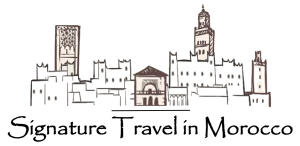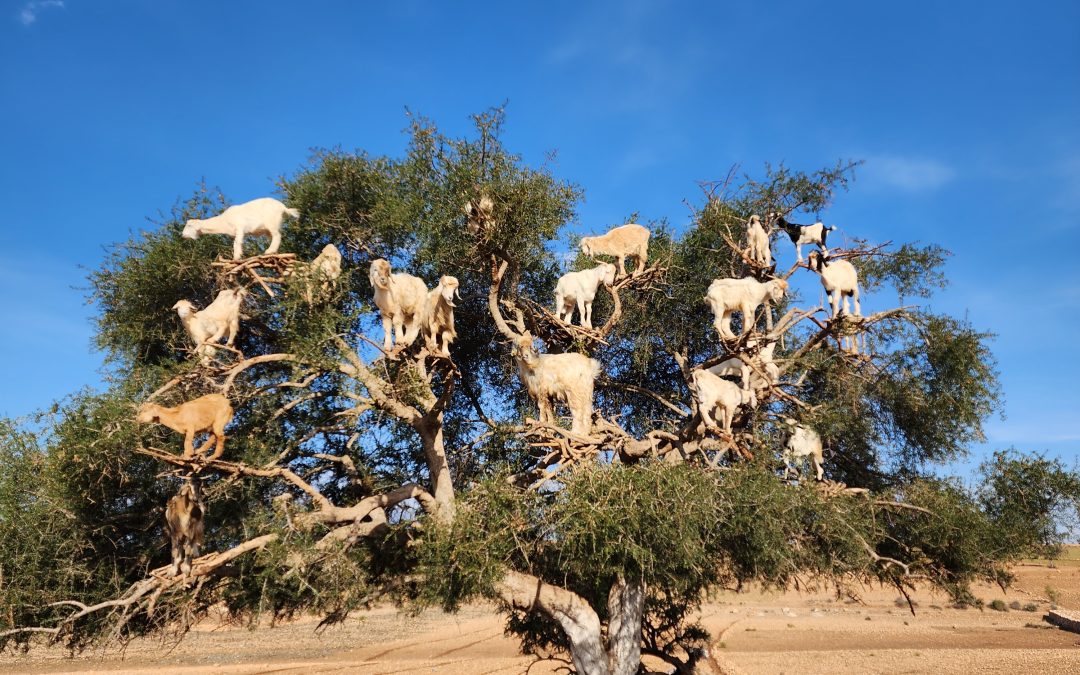Argan oil is a natural product sourced from the kernels of the Argania Spinosa tree (a species native to Morocco). It is rich in essential fatty acids and antioxidants (including vitamin E, polyphenols, linoleic acid, and sterols). Morocco is the only place in the world where these trees grow and only grow in a particular region. (I should mention that there is a type of argan tree that grows on the east coast of Mexico but doesn’t produce fruit – no Bueno!). The oldest argan tree in Morocco is 500 years old and can be found on the road that links Marrakesh to coastal Essaouira.
How do we make argan oil? The process is very similar to olive harvesting and pressing. The argan fruit is picked or shaken from the trees. To extract the kernels, workers first dry the argan fruit (similar in size and shape to an olive) in the open air and then remove the fleshy pulp by hand. The next step involves cracking the argan nut to obtain the argan kernels. Then the grains are put into a grinding stone and turned by hand. The mash that is expelled is pure, unfiltered argan oil. The remaining press cake (dregs) is protein-rich and often used as cattle feed or in the famous black soap used in the hammam. Attempts to mechanize the whole process have been unsuccessful, so workers still do everything by hand, making it time-consuming & labor-intensive.
Uses:
- Work it into the ends of your hair to moisturize and avoid split ends.
- Rub into your scalp, leave on for 5 minutes, then shampoo and rinse. This will promote hair growth.
- Put a few drops on your face at night to balance sebum levels, reduce redness, nourish and hydrate.
- Apply to dry patches/eczema to soothe.
- Apply on scars/stretch marks to help them fade.
Argan oil is also used for culinary purposes, so you will also glow from the inside out! The only difference in the process is that the kernels are roasted before being ground/pressed to obtain a gorgeous nutty flavor. This oil is not meant to be heated or cooked but drizzled over salads, meat, and fish.
We, humans, are not the only ones, nor were we the first, to appreciate argan. The local goats find the fruit delicious and climb up into the argan trees to feed freely on the fruit. You have to see this phenomenon of “goats in the trees” for yourself!

